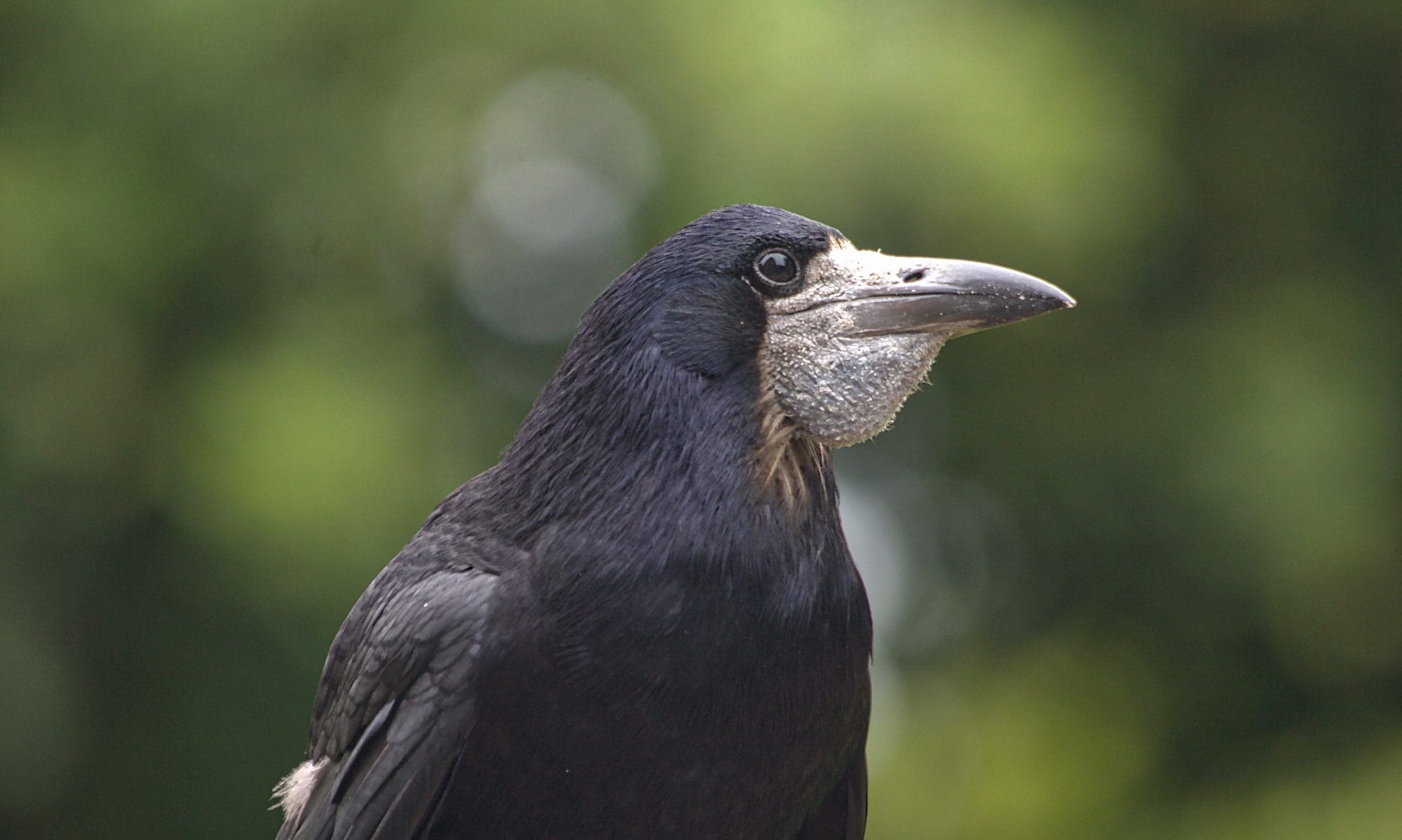One of topics commonly discussed in corvid fora and question frequently asked is what to feed crows, usually referring to birds in the wild, but also to birds cared for in captivity or during rehabilitation. One of the most frequent answers given is that the name carrion crow is a giveaway, and that crows would eat, who would have guessed, almost exclusively any type of carrion.
However, when looking through findings of scientific studies about feeding habits of corvids, confirmed and enriched by individual experiences of corvid rescues and rehabbers, it becomes evident that this answer is not exactly true and would in fact suggest an unhealthy and unbalanced diet.
Naturally, there is both, a geographical and a seasonal variation of proportion and amount of vegetable matter and animal protein being consumed by our different native corvid species. Looking at feeding habits in more detail, qualitative and quantitative analysis of corvid pellets acquired all year round have shown that vegetable matter makes up to 46% of the total food intake in jackdaws, 50% in carrion crows, 71% in ravens, 61% in magpies and up to 36% in choughs. The animal protein based food intake is about 9% in jackdaws, 11% in carrion crows, 14% in ravens, 26% in magpies and 52% in choughs. The remainder of the analysed pellets is made up of varying amounts of grit. 1

Coming back to carrion crows and their feeding habits, and taking local and seasonal variations in account, the conclusion that these birds sustain themselves mainly from carrion seems not to be supported by the available scientific data. It becomes rather evident that carrion crows are enjoying a varied diet. This should actually not be unexpected or a surprise, considering the well documented level of intelligence and adaptability of crows and other corvid species.
Another species related misconception often broadcasted in the media is related to the feeding habits of rooks, which are often regarded as a pest species based on their known interactions with crops. Rooks are frequently portrait as sole cereal eaters causing severe damage to food crops. This unscientific and anthropocentrically rooted viewpoint is often conveniently used as an argument to easily justify the cull of rooks for no other reason than to protect human monetary interests. This particular approach is not any different to similarly unfounded claims about ravens, only that this time ravens, and sometimes crows too, are accused of killing lambs or pregnant ewes.

However, scientific evidence shows that rooks may in fact have a beneficial impact onto our ‘precious’ ecosystem – an artificial system which is to a large extent manmade and managed by humans. In fact, rooks are also known to eat large amounts of insects and their larvae as part of their diet, which in turn are known to damage food crops. In this respect rooks do help stopping the spread of animal pests, in particular during spring time.
The beak of rooks is designed to probe the ground for insects, worms and larvae. Rooks are unable to easily dissect a dead animal, but they will eat carrion, which has been already ‘prepared’ by other animals. Having an omnivorous diet, rooks eat both vegetable and animal based food. During winter, their basic food consists of berries and seeds and in spring they tend to eat and collect small animals, which is essential when raising their offspring. In the summer, after the harvest, they are present in the strawy crops looking for caryopsis that fell on the ground. 2 3

A Selection Of Corvid Diet Recommendations
In essence it is safe to conclude that corvids have a varied diet, which includes carrion, but also fruits, grains, nuts, acorns, snails, crabs, mussels, small birds, eggs, rabbits, mice, toads, crayfish, snakes, lizards, salamanders, rats, flying insects, grasshoppers, caterpillars and much more, including an endless supply of edible leftovers provided by human wastefulness and negligence.
Interestingly, corvids including crows, do love fruits and vegetables. Ideally, native fruits like pears, apple, grapes or blue berries can be provided. Corvids also appreciated grains, peanuts, pine nuts, hazelnuts, walnuts, acorns and chestnuts. Fresh maize or corn on the cob, chickpeas, peas and beans are also readily accepted.

Frozen day old chicks or mice are a suitable carrion substitute in particular for ravens and carrion crows. Alternatively, minced beef or poultry entrails can be given occasionally. Dried or live meal worms, defrosted crickets as well as live wax worms are generally appreciated by all corvid species. Soaked high quality cat biscuits with a high protein contents can be used as staple food for all corvid species.
Occasionally raw egg yolks, whole eggs, hard-boiled eggs, pasta or pieces of whole grain bred can be served as well. Corvids species living in coastal habitats also seem to enjoy white bait, mussels and shrimps.
Disclaimer: The use and citation of scientific evidence in this blog post is under no circumstances an endorsement or acknowledgment of unethical scientific methods, which may have been utilised to acquire scientific evidence in some of the papers cited in this blog post.
Bibliography
- Soler JR, Soler M, Martinez JG. Grit ingestion and cereal consumption in five corvid species. 2005 Jan 5; pages 1–7. ↩︎
- Tarnoveanu E., Study on Food Ingestion and Types of Food for Rooks (Corvus Frugilegus L.). Biologie animala. 2012;LVIII:1–10. ↩︎
- Holyoak DT. Food of the Rook in Britain. Bird Study. 4 ed. 2009 Jun 23;19(2):59–68. ↩︎

